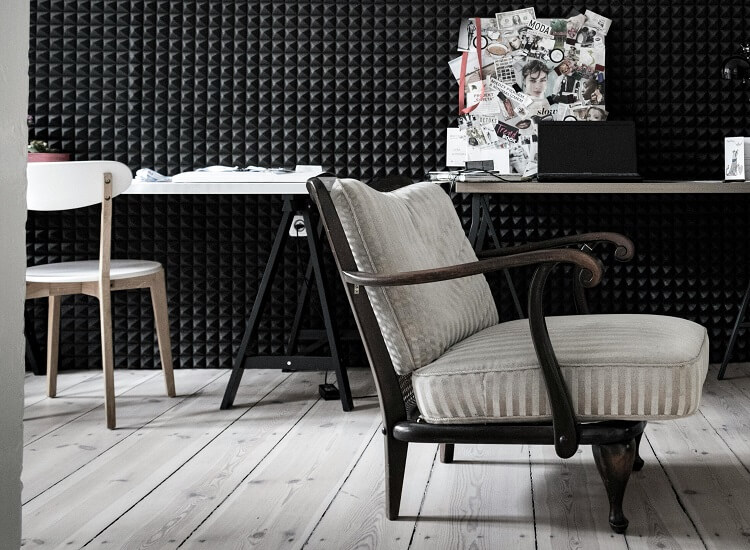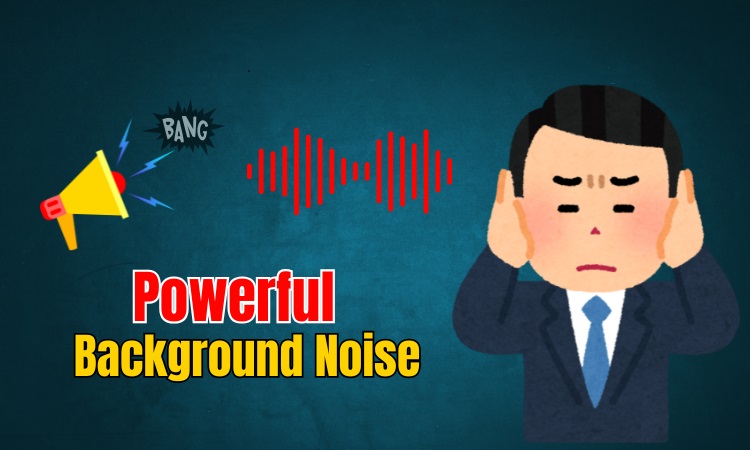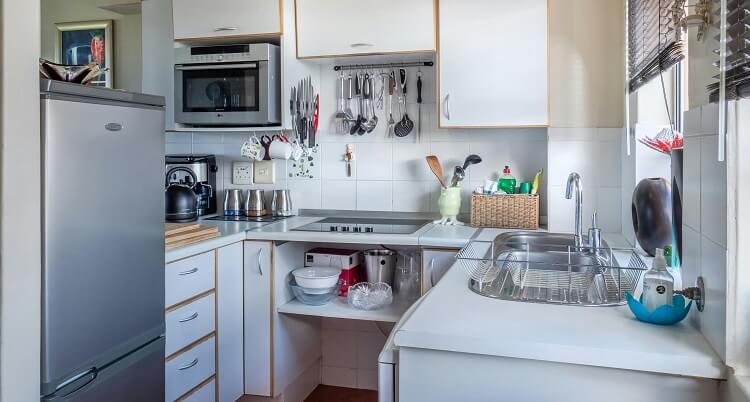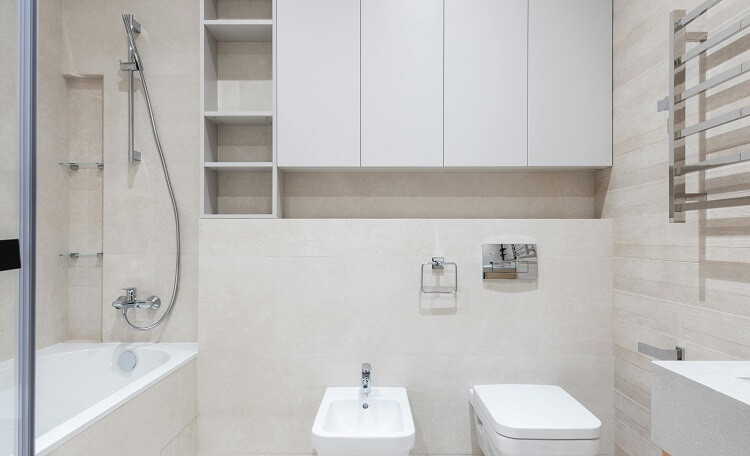
Tired of the constant hum of chatter, footsteps, or clattering dishes in shared spaces? Whether it’s a bustling open-plan office, a lively co-living apartment, or a busy family home, excessive noise can disrupt focus, spike stress, and zap productivity. Fortunately, you don’t need a complete overhaul to reclaim peace.
In this guide, we’ve researched and rounded up 5 effective strategies to reduce noise in shared spaces backed by acoustic principles and real-world solutions. From clever design hacks to affordable soundproofing tricks, discover how to create a quieter, more harmonious environment that everyone can enjoy. Let’s turn down the volume and turn up the calm starting now!
Why Noise Control Matters
Noise isn’t merely an inconvenience; it’s a significant factor influencing health, productivity, and overall quality of life. Studies have demonstrated the detrimental effects of excessive noise, highlighting the importance of proactive noise management in shared environments.
How Noise Affects Productivity
According to the World Health Organization (WHO), prolonged exposure to noise levels above 55 dB, especially consistent or unpredictable noises, can significantly impair cognitive function and reduce efficiency.
For instance, a study published in the Journal of Environmental Psychology found that workers in open-plan offices with high noise levels experienced a 66% reduction in their ability to focus on complex tasks. Furthermore, research indicates that employees in noisy workplaces report higher stress levels and lower job satisfaction, leading to decreased productivity and increased absenteeism.
Health Risks of Noise Exposure
The impact of noise extends beyond mere distraction; it can pose serious health risks. Exposure to elevated noise levels triggers the body’s stress response, leading to a cascade of negative health consequences.
- Increased Stress: Continuous noise activates the sympathetic nervous system, increasing cortisol (the stress hormone) levels.
Chronic stress can lead to various health problems, including cardiovascular disease, weakened immune function, and mental health issues.
- Sleep Disruption: High noise levels interfere with sleep patterns, causing insomnia and reducing sleep quality. Poor sleep can exacerbate stress, impair cognitive function, and contribute to a range of health problems.
- Hearing Damage: Repeated exposure to loud noise, especially above 85 dB, can cause noise-induced hearing loss (NIHL). NIHL can be temporary or permanent, depending on the intensity and duration of the exposure.
By actively reducing noise in shared spaces, you’re not simply creating a quieter atmosphere—you’re investing in the health, well-being, and productivity of everyone within that environment.
Common Sources of Noise in Shared Spaces
Before implementing noise reduction strategies, it’s crucial to pinpoint the primary noise sources within the specific shared environment.
Identifying the culprits allows for targeted solutions that maximize impact.
Top Noise Culprits in Shared Environments
- Human Conversations: Loud or overlapping discussions, particularly in open-plan offices or co-working spaces, are major distractions. Phone calls, meetings, and casual conversations can contribute significantly to the overall noise level.
- Office Equipment: Printers, copiers, HVAC systems, and other mechanical noises create a constant background hum that can interfere with concentration. The whirring of fans, the clicking of keyboards, and the ringing of phones add to the auditory overload.
- Outdoor Sounds: Street traffic, construction noise, sirens, and other external sounds can penetrate through windows and thin walls, disrupting focus and increasing stress.
In apartments, this can include noise from neighbors, such as music, television, or conversations.
- Shared Appliances: In co-living spaces or shared apartments, kitchen appliances like blenders, dishwashers, and garbage disposals can create significant noise pollution, particularly during peak usage times.
Once you’ve identified the dominant noise sources, you can implement tailored strategies to effectively reduce their impact and create a more peaceful environment.
Simple Ways to Reduce Noise in Shared Spaces
Creating a quieter shared space doesn’t require extensive renovations or expensive equipment. A combination of thoughtful design, strategic placement of sound-absorbing materials, and the establishment of considerate noise etiquette can significantly improve acoustic comfort.
1. Upgrade with Sound-Absorbing Materials
Hard surfaces reflect sound waves, amplifying noise within a room.
Incorporating sound-absorbing materials effectively minimizes echo and reverberation, creating a more tranquil atmosphere. This is crucial when looking to reduce noise in shared spaces.
Install Acoustic Panels
Acoustic panels are specifically engineered to absorb sound waves, preventing them from bouncing off walls and ceilings. Various options are available, including fabric-wrapped panels, foam tiles, and even aesthetically pleasing designs that complement modern décor.
These panels are particularly effective in open offices, meeting rooms, and co-working spaces.
Use Rugs and Carpets
Hard flooring reflects sound, amplifying noise levels. Placing rugs or carpets, especially thicker, denser ones made of wool or other absorbent materials, in high-traffic areas helps absorb sound and muffle footsteps and ambient noise. Consider strategically placing rugs near workstations or in communal areas to maximize their impact.
Seal Gaps and Cracks
Gaps around windows and doors allow external noise to infiltrate shared spaces.
Weatherstripping or acoustic sealant effectively seals these gaps, blocking out unwanted sounds like traffic and construction noise. Door sweeps further minimize noise seepage under doorways.
2. Rearrange Your Space for Less Noise
The layout of a shared space significantly influences sound propagation.
Strategic furniture placement and the use of sound barriers can drastically reduce noise levels.
Reposition Desks and Furniture
Position desks and workstations away from high-traffic areas, entrances, hallways, and communal spaces. Placing desks against walls rather than in open areas minimizes sound spread and creates individual zones of quiet.
Use Bookshelves and Partitions as Barriers
Tall bookshelves, cabinets, and strategically placed partitions create effective sound barriers. Bookshelves filled with books or decorative items offer both aesthetic appeal and sound absorption.
Portable soundproof partitions made from acoustic materials provide a flexible solution for dividing open-concept workspaces and minimizing noise distractions.
3. Encourage Quiet Etiquette
Cultivating a culture of consideration and respect significantly impacts noise levels in shared spaces. Establishing clear guidelines for acceptable noise levels fosters a more productive and harmonious environment.
Set Clear Noise Rules
Implement and clearly communicate noise guidelines for the shared space.
Signage reminding people to lower their voices, limit loud phone conversations, and use designated areas for group discussions helps reinforce quiet etiquette and promotes a more peaceful atmosphere.
Designate Quiet Zones
Create designated quiet zones within the shared space to support focused work and relaxation. Clearly labeling these areas for silent work or deep concentration reinforces their purpose and helps maintain a low-noise environment. Position quiet zones away from high-traffic areas and noise sources to maximize their effectiveness.
Encourage the Use of Headphones
For individuals requiring focused concentration, noise-canceling headphones offer an effective solution.
They filter out background noise, creating a personal oasis of quiet. Providing access to noise-canceling headphones as a shared resource can be beneficial in many work environments.
4. Use Technology for Noise Control
Technological tools can play a valuable role in managing sound levels in shared spaces.
Noise-Masking Systems
White noise machines or active noise-canceling speakers generate a consistent, unobtrusive background sound that helps mask disruptive noises.
These systems are particularly useful in open offices where unpredictable sounds can interrupt workflow. Various sound options are available, from nature sounds to pink noise, allowing individuals to choose what works best for them.
Sound Level Monitors
Installing sound level monitors in shared workspaces provides real-time feedback on noise levels. Visual cues alert occupants when noise exceeds acceptable thresholds, prompting them to lower their volume and maintain a productive sound environment.
5. Incorporate Plants for Enhanced Acoustics
While plants primarily enhance aesthetics, strategically placed greenery can contribute to a more pleasant acoustic environment. Large, leafy plants can help diffuse and soften sounds, reducing echo and reverberation, especially in spaces with hard surfaces.
Suitable Plants for Acoustic Enhancement
- Rubber Plants: Thick, broad leaves help diffuse sound waves.
- Fiddle-Leaf Figs: Large leaves act as natural sound barriers.
- Peace Lilies: Compact and effective for softening indoor sounds.
- Bamboo Palms: Effective for diffusing high-frequency sounds.
Positioning plants near windows, in corners, and around the perimeter of a space can enhance their sound-dampening and diffusing effects.
Final Thoughts
Reducing noise in shared spaces is essential for fostering productivity, promoting well-being, and creating a more harmonious environment. By implementing these practical strategies, from incorporating sound-absorbing materials to cultivating mindful noise etiquette, you can transform shared spaces into oases of focus and tranquility.
Start by identifying your primary noise challenges and take incremental steps towards creating a quieter, more productive, and healthier shared environment.






